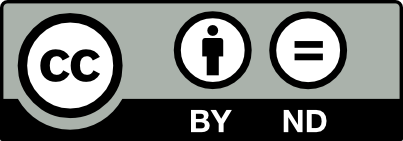
Creative Commons (CC) is a system of Copyright licensing that allows the legal use and reuse of media. When you see a Creative Commons license, it means that the copyright holder of that work has decided to share their work with you—and with everyone else.
CC Browser Extension
Download for free the CC Search browser extension to easily find and use CC-licensed images (with attribution) in just one click
Creative Commons images
Flickr
After doing an initial search, you can then filter by CC licence
DigitalNZ
NZ digital content - includes images, video and audio. After entering your search, use 'filter' to find CC material.
Google Image Search
Use the drop down menu box near the bottom of the search options to filter your search by usage rights.
Pexels
The best free stock photos, royalty free images & videos shared by creators.
Wikimedia Commons
A database of mostly freely reuseable images. Read their Reuse statements here.
TinEye
Search by colour - searches CC images from Flickr
Unsplash
Free usable images.
Legal music for videos
A list of sites which offer CC-licensed music
ccMixter
For CC music
A selection of CC music, available for free use
Software
Some software has copyright free audio included, e.g. PowerPoint
This Youtube video was made by the Library at the University of Guleph in Canada, and was shared under a CC BY-SA 4.0 licence.
The Creative Commons (CC) licences are an easy-to-understand set of licences which allow a tiered set of usage so that creators get acknowledged for their work and the integrity of the work is protected. All CC licences have attribution at their core.
The licences are:
 Attribution (CC-BY)
Attribution (CC-BY)
This is the least restrictive of the Creative Commons licences. This one means that in order to use your work, people just have to acknowledge that you were the original creator.
 Attribution-Share Alike (CC-BY-SA)
Attribution-Share Alike (CC-BY-SA)
The next layer up is a Share-Alike licence, which means that people can modify your work, even for commercial purposes, as long as they acknowledge you as the original creator. They do not have to pay to use your work under this licence, but they do have to licence their own creation under the same terms (so, use the CC-BY-SA licence). Wikipedia use this licence.
 Attribution-No Derivatives (CC-BY-ND)
Attribution-No Derivatives (CC-BY-ND)
Under this licence, people can use your work (including for commercial purposes), but they cannot share it in its modified form.
 Attribution-Non-Commercial (CC-BY-NC)
Attribution-Non-Commercial (CC-BY-NC)
Non-commercial licences are just that - people can use your work, as long as they're going to make it freely available and not use it for commercial gain. However, they don't have to licence their new work on the same terms.
 Attribution-Non-Commercial-Share Alike (CC-BY-NC-SA)
Attribution-Non-Commercial-Share Alike (CC-BY-NC-SA)
This licence allows people to use and adapt your work, as long as they make it freely available and do not use it for commercial gain. People must also acknowledge you as the original creator, and licence their own creation under the same terms.
 Attribution-Non-Commercial-No Derivatives (CC-BY-NC-ND)
Attribution-Non-Commercial-No Derivatives (CC-BY-NC-ND)
This is the most restrictive of all the CC licences. Basically, new users have to acknowledge you as the original creator, not use your work for a commercial purpose, and not share it in its modified form.
 Attribution-Public Domain (CC0)
Attribution-Public Domain (CC0)
This is s a public dedication tool, which allows creators to give up their copyright and put their works into the worldwide public domain.
Have a look on the Creative Commons website for more information.